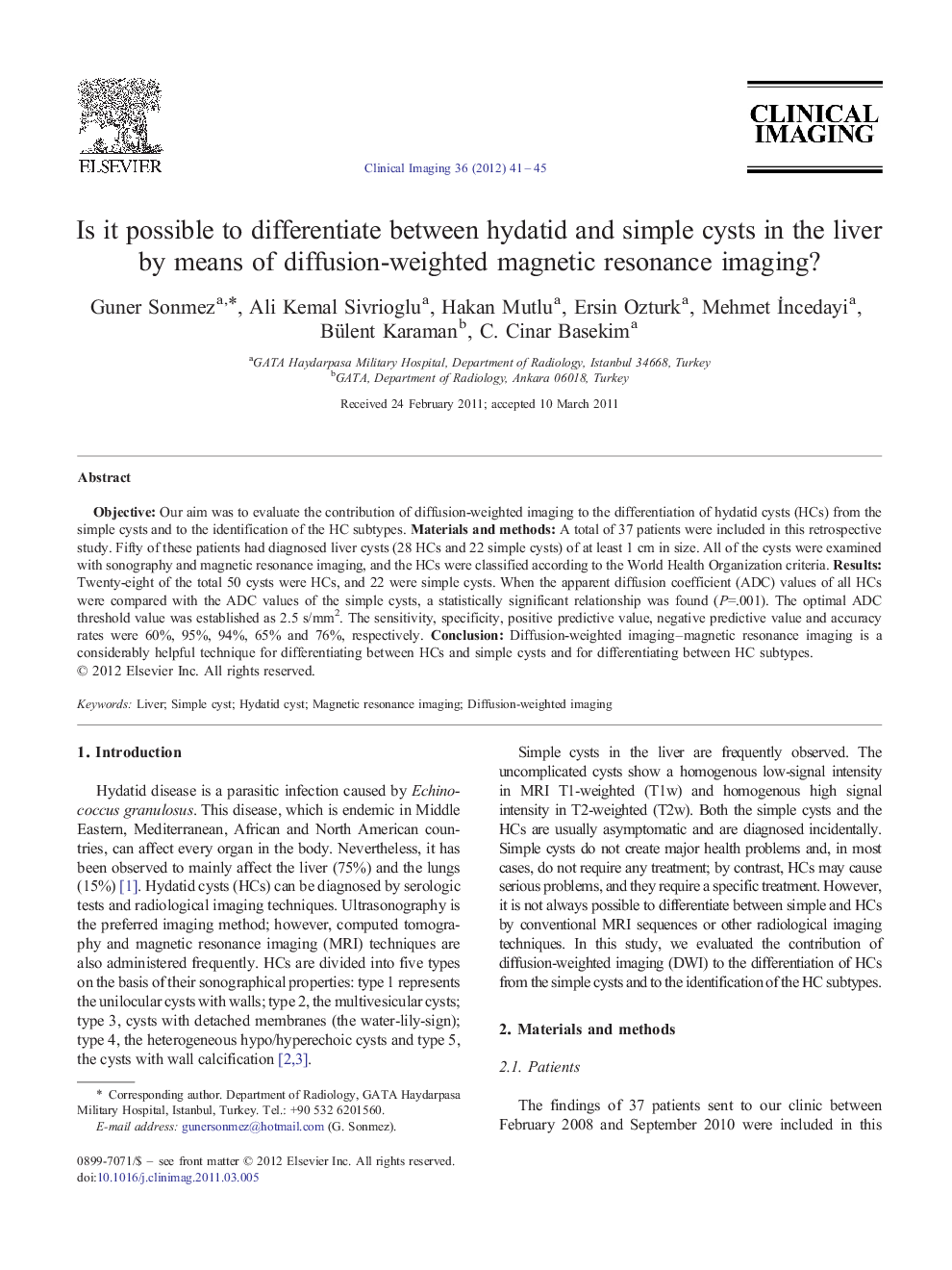| Article ID | Journal | Published Year | Pages | File Type |
|---|---|---|---|---|
| 4221848 | Clinical Imaging | 2012 | 5 Pages |
ObjectiveOur aim was to evaluate the contribution of diffusion-weighted imaging to the differentiation of hydatid cysts (HCs) from the simple cysts and to the identification of the HC subtypes.Materials and methodsA total of 37 patients were included in this retrospective study. Fifty of these patients had diagnosed liver cysts (28 HCs and 22 simple cysts) of at least 1 cm in size. All of the cysts were examined with sonography and magnetic resonance imaging, and the HCs were classified according to the World Health Organization criteria.ResultsTwenty-eight of the total 50 cysts were HCs, and 22 were simple cysts. When the apparent diffusion coefficient (ADC) values of all HCs were compared with the ADC values of the simple cysts, a statistically significant relationship was found (P=.001). The optimal ADC threshold value was established as 2.5 s/mm2. The sensitivity, specificity, positive predictive value, negative predictive value and accuracy rates were 60%, 95%, 94%, 65% and 76%, respectively.ConclusionDiffusion-weighted imaging–magnetic resonance imaging is a considerably helpful technique for differentiating between HCs and simple cysts and for differentiating between HC subtypes.
